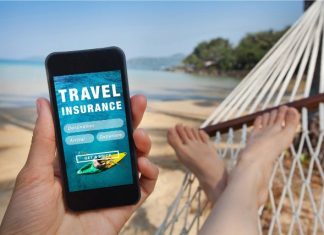So, we were going skiing near Munich, Germany, and we would need a car….. but our cheap airline tickets would take us to Milan, Italy.
Easy, you’d think: Rent the car at the airport in Italy: Only a couple of hours’ drive through scenic areas, such as the Brenner Pass along the E45 – Yeah! Road trip! We could have stops at scenic spots along the way…..and it was the cheapest option for transporting all 5 of us to Oberaudorf……Right?
Not quite.
Fortunately, although novices of winter driving in Europe, we discovered a small but very important factor:
Winter tires.
We went skiing. That means Winter & SNOW.
In Italy, Winter tires are not compulsory, though you may be required to fit snow chains.
But Winter tires are compulsory in Austria and Germany! This was a problem. The car rental companies we tried in Italy offered snow chains at an additional fee. None of the agencies had the option of Winter tires.
Therefore we had to consider the pros and cons of renting a car in Italy at the airport:
Renting in Italy – Positives:
- Cheaper cost for traveling to Germany since it was one expense for the 5 of us.
- We could stop for sightseeing en route.
Renting in Italy – Negatives:
- We would face unfamiliar (and potentially dangerous) driving in freezing conditions, on snow, with our most precious children in tow, without the prescribed tires.
- We would need to fit unfamiliar snow chains.
- We would be breaking the law. (This one sort of clinched it for us)
- We would be subjected to Italian driving! (No, this is something to behold, more on this in a separate article.)
The decision was easy – we booked a car online in Germany, where snow tires are automatically fitted at no extra cost, and we were fortunate to get very reasonably priced train tickets to Germany. As a result, we enjoyed a peaceful train trip through a heavy snowstorm at one stage without the worry of figuring out how cumbersome snow chains work.
But what other truths have we learned, as initial novices, about booking and renting a car internationally?
Here are some of our tips:
1. Book online: It is cheaper.
The car rental booking sites offer special rates and comparisons to other rental agencies. It will not be at these special rates if you rent at the counter.
2. Consider space for your luggage.
Do consider the boot capacity of the car which you intend to rent. Don’t think you can squeeze someone in on a back seat next to a suitcase just because you can get the smaller car at an amazing rate. Rather take the slightly more expensive car with sufficient boot space.
My late brother once laughingly told us about a 5 seater car he and his wife had rented when their 3 children were still young. Unfortunately, he had yet to consider the required luggage space of 5 people: The children had to sit on top of one of the suitcases on the back seat.
3. Understand that a large amount will be reserved on your credit card for the Collision Damage Waiver excess – and that you will need that same credit card at the end of the rental to have this reserved amount released – if no additional costs have been identified.
4. Refrain from being pressured into taking out the additional Collision Damage Waiver (CDW) excess cover at the counter.
This is your choice, but beware that all Car Rental Agencies try (and I mean to try hard) to sell you an additional, ridiculously priced CDW excess cover. They paint a scenario of imminent damage to the car, and you have to cough up the maximum excess, whereas you could rather purchase their additional cover for peace of mind. When we considered this in our recent trip to Croatia, this additional coverage alone would have amounted to 3x the cost of the actual car hire! This is how car rental companies secure their profit.
Do consider and investigate other options:
- Some credit cards, such as VISA and MASTERCARD, offer this coverage if you pay for the rental with your card and don’t take out the rental company’s car coverage. Give your credit card company a call and find out – there may be restrictions on the types of damage they cover. Still, hey, it’s worth a shot.
- You can also take out your own, much cheaper, coverage from a private insurer. (The attendant at the Car Rental Agency will try to convince you that this type of insurance is not valid:
We overheard one who convinced the guy in front of us to purchase their cover, even though he had already confirmed beforehand that he would be covered for any damage excess from his policy. Yes, if there had been damage, he would have been charged by the car rental company from the reserved amount on his credit card, but he would have been able to claim it back from his coverage later.)
5. When picking up the car, check it for ALL types of damage, note them down on the paperwork, and take photos.
Walk around the car when you collect it and note down every little dent, scratch, or damage on the inside. Also, check whether there is a spare tire and its condition. Remember: all perceived “new” damages will be charged to your card for repairs. Also, check the fuel level – to know at which level you need to give it back for a full to full policy.
6. Consider whether you need a GPS (or a Baby seat).
Additional features, such as a GPS, Child seat, etc., all come at an additional fee when you book them.
- Consider that some makes of cars have built-in GPS. We did not request or pay for a GPS with our car rental in Germany, but the vehicle we got had it installed anyway. However, this might be risky because you are not guaranteed the exact make or model of the car you book – they can give you something similar, which might not have a GPS.
- Consider taking your own – as long as you have the maps loaded. Or, in this day of smartphones and roaming data, you can always use your phone. Especially if you only need to activate your data when it becomes necessary to save data costs. If traveling long distances on motorways, switch your data off between inquiries.
- As for baby seats, although we have not needed one, I have heard of people who got on the plane with their baby car seats booked in the cargo. The cost of this was much, much lower than what the daily additional cost for a baby seat would have been at the car rental company.
7. Familiarize yourself with your destination country’s traffic signs, general speed limits, and tolling system.
Although there are similarities in most traffic signs, some might be unfamiliar to a weary traveler and have a meaning that could be more easily deduced. The speed limits in built-up areas, open roads, and motorways might also differ from your home country – and they are not always displayed. You might find yourself driving along, and it seems that everyone else knows that the speed limit has changed because you are approaching or leaving a certain area. A traffic fine may come and haunt you later – the rental car company will charge it to you, and yes, with additional “administration” fees.
A quick stint on the internet to Google our destination country’s traffic signs and regulations have always been helpful.
Also, check the applicable toll types: Do you need to purchase a vignette toll sticker? How are electronic toll lanes marked at toll gates? Etc.
8. Parking, Parking, Parking.
Lastly, remember to consider the issue of parking when booking your accommodation. Yes, it would be lovely to book a nostalgic little apartment, off a cobbled street, in an old town Centre….but it is almost guaranteed that the nearest public parking will not be nearby. And it will come at a cost.
It stands to reason that considering accommodation where free, secure, on-site parking is included in the booking fee makes more sense.
SAFE DRIVING.
Happy holidays.








